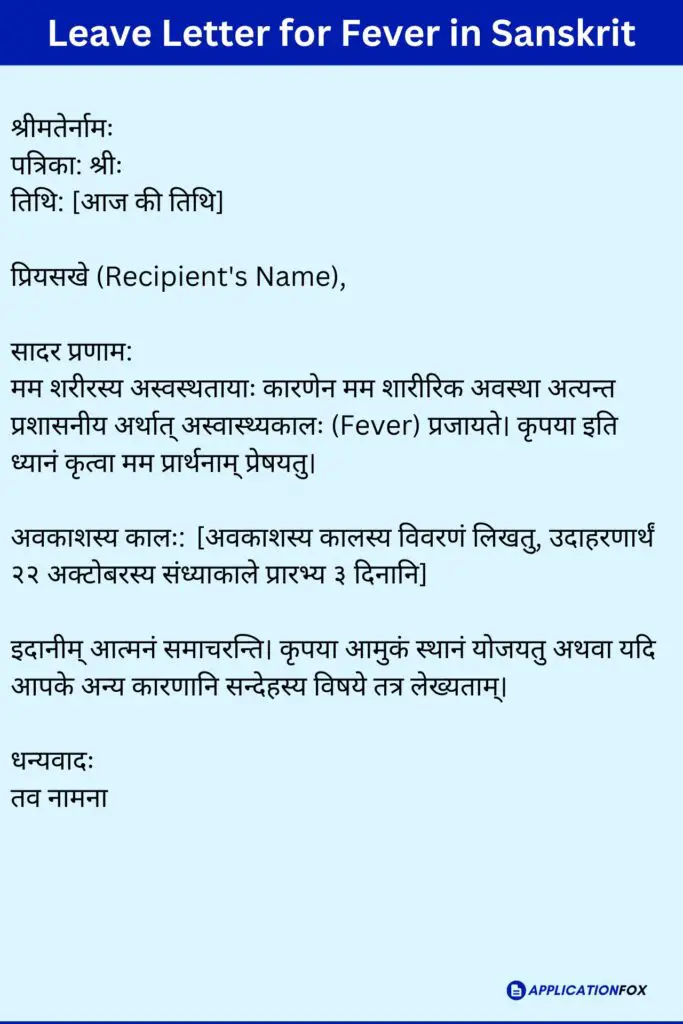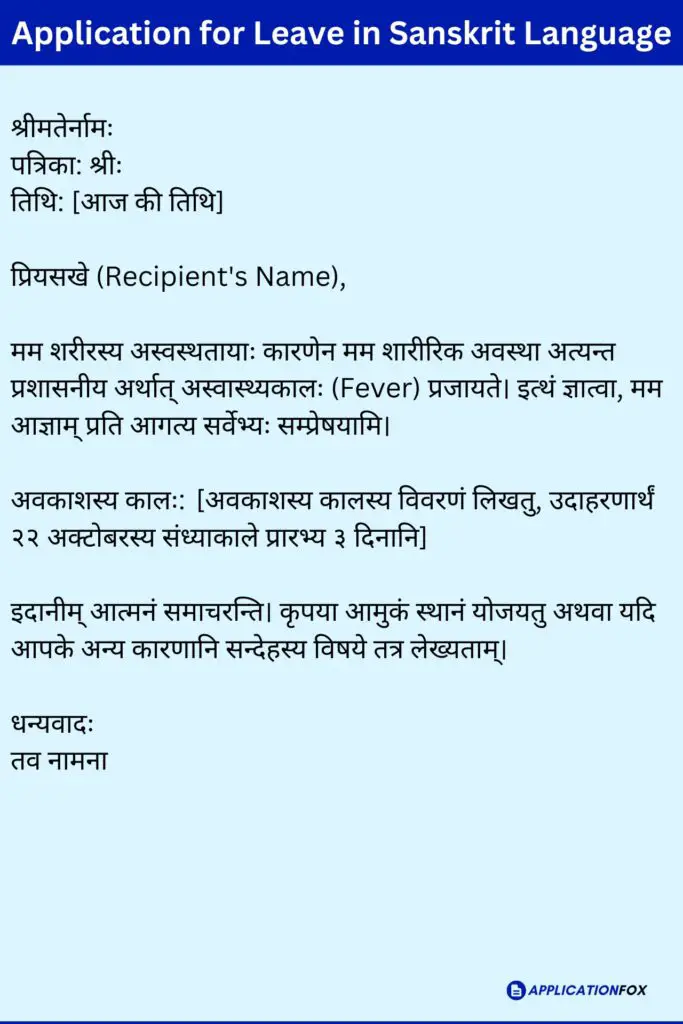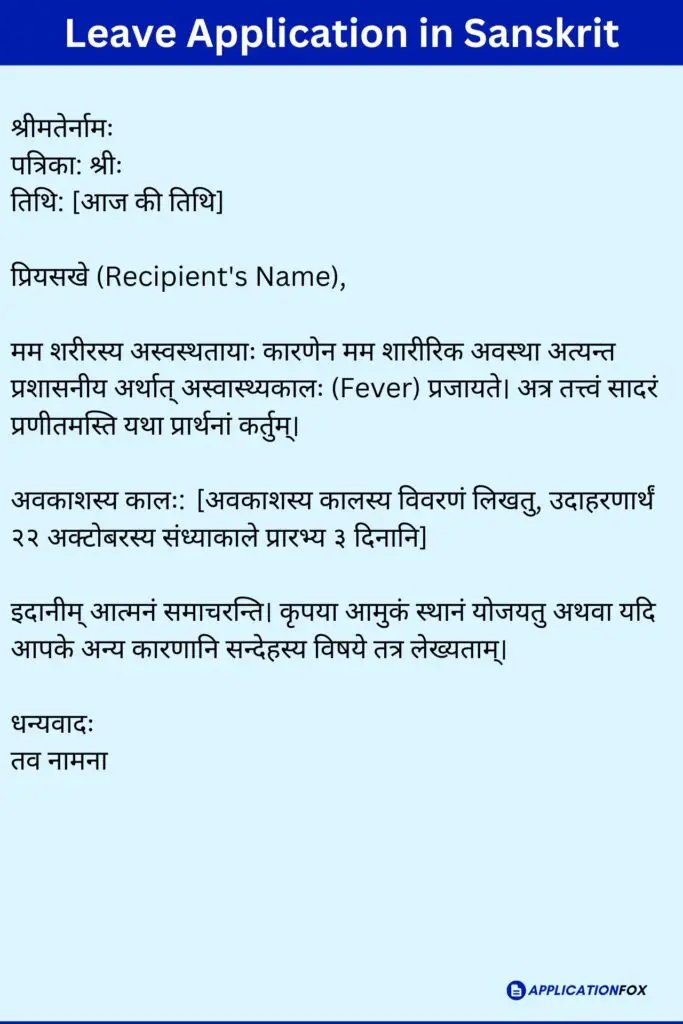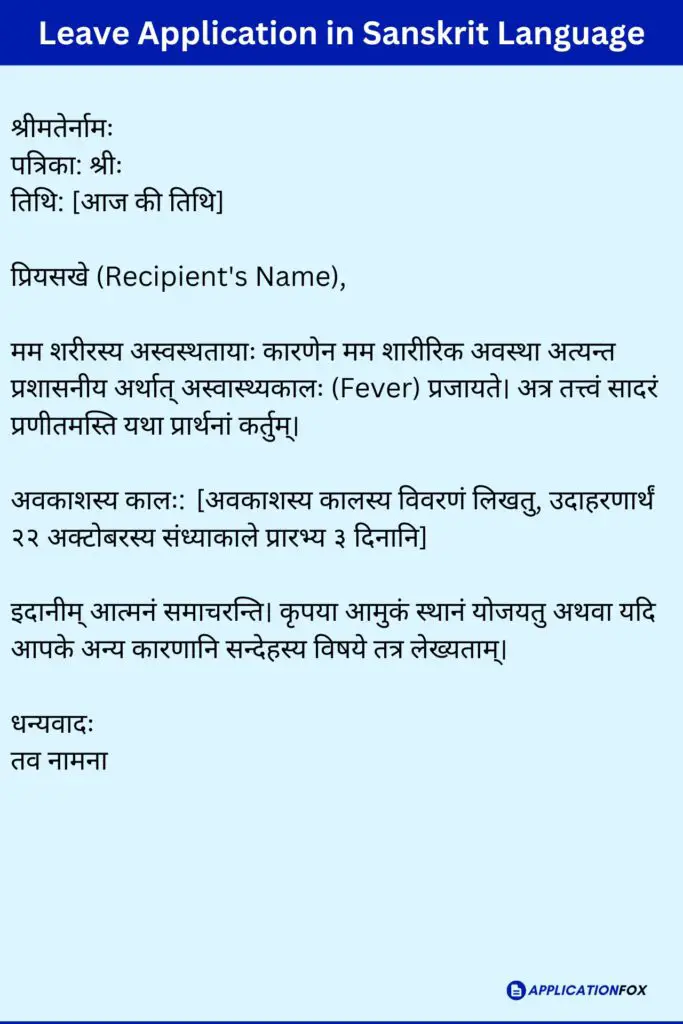Sanskrit, the ancient language of India, contains a vast treasury of knowledge and wisdom. In today’s age, there is a growing need to revive Sanskrit, especially in the field of healthcare and medicine. Connecting back to India’s cultural roots while benefiting from ancient medical wisdom is the need of the hour.
Describing ailments like fever in Sanskrit can provide greater depth and precision in medical terminology. Sanskrit descriptions capture the holistic understanding of fever in systems like Ayurveda. Fever is seen not just as a symptom but as an expression of deeper imbalance in the body. Understanding fever in its original Sanskrit context facilitates more wholistic treatment.
This article focuses on constructing applications for fever in Sanskrit. We will explore the nuances of Sanskrit terminology related to fever and their usage in Ayurveda. The goal is to develop sample applications that blend ancient medical wisdom with contemporary formats. For practitioners, enthusiasts, and anyone interested in India’s cultural heritage, this endeavor aims to showcase Sanskrit’s enduring value in modern healthcare.
Contents
Leave Letter for Fever in Sanskrit
श्रीमतेर्नामः
पत्रिका: श्रीः
तिथि: [आज की तिथि]
प्रियसखे (Recipient’s Name),
सादर प्रणाम:
मम शरीरस्य अस्वस्थतायाः कारणेन मम शारीरिक अवस्था अत्यन्त प्रशासनीय अर्थात् अस्वास्थ्यकालः (Fever) प्रजायते। कृपया इति ध्यानं कृत्वा मम प्रार्थनाम् प्रेषयतु।
अवकाशस्य कालः: [अवकाशस्य कालस्य विवरणं लिखतु, उदाहरणार्थं २२ अक्टोबरस्य संध्याकाले प्रारभ्य ३ दिनानि]
इदानीम् आत्मनं समाचरन्ति। कृपया आमुकं स्थानं योजयतु अथवा यदि आपके अन्य कारणानि सन्देहस्य विषये तत्र लेख्यताम्।
धन्यवादः
तव नामना
Application for Leave in Sanskrit Language
श्रीमतेर्नामः
पत्रिका: श्रीः
तिथि: [आज की तिथि]
प्रियसखे (Recipient’s Name),
मम शरीरस्य अस्वस्थतायाः कारणेन मम शारीरिक अवस्था अत्यन्त प्रशासनीय अर्थात् अस्वास्थ्यकालः (Fever) प्रजायते। इत्थं ज्ञात्वा, मम आज्ञाम् प्रति आगत्य सर्वेभ्यः सम्प्रेषयामि।
अवकाशस्य कालः: [अवकाशस्य कालस्य विवरणं लिखतु, उदाहरणार्थं २२ अक्टोबरस्य संध्याकाले प्रारभ्य ३ दिनानि]
इदानीम् आत्मनं समाचरन्ति। कृपया आमुकं स्थानं योजयतु अथवा यदि आपके अन्य कारणानि सन्देहस्य विषये तत्र लेख्यताम्।
धन्यवादः
तव नामना
Leave Application in Sanskrit
श्रीमतेर्नामः
पत्रिका: श्रीः
तिथि: [आज की तिथि]
प्रियसखे (Recipient’s Name),
मम शरीरस्य अस्वस्थतायाः कारणेन मम शारीरिक अवस्था अत्यन्त प्रशासनीय अर्थात् अस्वास्थ्यकालः (Fever) प्रजायते। अत्र तत्त्वं सादरं प्रणीतमस्ति यथा प्रार्थनां कर्तुम्।
अवकाशस्य कालः: [अवकाशस्य कालस्य विवरणं लिखतु, उदाहरणार्थं २२ अक्टोबरस्य संध्याकाले प्रारभ्य ३ दिनानि]
इदानीम् आत्मनं समाचरन्ति। कृपया आमुकं स्थानं योजयतु अथवा यदि आपके अन्य कारणानि सन्देहस्य विषये तत्र लेख्यताम्।
धन्यवादः
तव नामना
Leave Application in Sanskrit Language
श्रीमतेर्नामः
पत्रिका: श्रीः
तिथि: [आज की तिथि]
प्रियसखे (Recipient’s Name),
मम शरीरस्य अस्वस्थतायाः कारणेन मम शारीरिक अवस्था अत्यन्त प्रशासनीय अर्थात् अस्वास्थ्यकालः (Fever) प्रजायते। अत्र तत्त्वं सादरं प्रणीतमस्ति यथा प्रार्थनां कर्तुम्।
अवकाशस्य कालः: [अवकाशस्य कालस्य विवरणं लिखतु, उदाहरणार्थं २२ अक्टोबरस्य संध्याकाले प्रारभ्य ३ दिनानि]
इदानीम् आत्मनं समाचरन्ति। कृपया आमुकं स्थानं योजयतु अथवा यदि आपके अन्य कारणानि सन्देहस्य विषये तत्र लेख्यताम्।
धन्यवादः
तव नामना
Application for Fever in Sanskrit: A Guide to Proper Structure and Key Components
In the realm of healthcare, precision and clarity are paramount. When it comes to communicating vital health information, especially in a language as rich and nuanced as Sanskrit, understanding the structure and components of a fever application is essential. This guide offers insights into creating well-structured fever applications in Sanskrit, ensuring that your message is accurate and effective.
Key Components of a Proper Fever Application in Sanskrit
1. Header and Title in Sanskrit: The first impression is crucial. Your fever application should start with a carefully crafted header and title in Sanskrit. This sets the tone for the document and conveys the seriousness of the matter.
2. Introduction Section: The introduction sets the stage for the entire application. It typically includes the user’s details, such as name, age, address, and contact information, all presented in Sanskrit script. Additionally, don’t forget to mention the date and place of writing, again in Sanskrit.
3. Body of the Application: This section is the heart of your fever application. It should provide a detailed account of the patient’s condition. Use precise Sanskrit terminology to describe the symptoms and their severity. Include information on any previous medical history, recent developments, and the current temperature. If there are prescribed medicines or treatments, ensure they are clearly stated in Sanskrit.
4. Closing Section: Expressing hope for a speedy recovery is a considerate touch. In this section, you can use Sanskrit phrases and expressions to wish the patient well. Don’t forget to sign the application in Sanskrit to add a personal touch.
Structuring the Application
- Clarity is Key: When crafting a fever application in Sanskrit, remember that clarity is of utmost importance. Choose words and phrases that accurately convey the information. If you are unsure about specific Sanskrit terms, it’s advisable to consult Sanskrit dictionaries or experts.
- Maintain a Formal Tone: Fever applications are formal documents. Keep your language and tone formal and respectful. This aligns with the seriousness of the medical context.
- Be Concise: Sanskrit has a rich vocabulary, but brevity can enhance understanding. Use succinct sentences to convey the necessary information clearly.
- Proofread and Review: Before finalizing the application, proofread it for any errors or inaccuracies. Ensure that the Sanskrit terminology used is precise and contextually appropriate.
- Preserve the Traditional Format: While adapting to modern times, it’s essential to preserve the traditional Sanskrit format. Following the established structure and terminology ensures authenticity and respect for the language.
In summary, creating a fever application in Sanskrit is not just about communication; it’s about preserving a profound cultural and linguistic heritage. By understanding the key components and structuring the application correctly, you can ensure that your message is both impactful and culturally respectful. Whether you are a practitioner, a language enthusiast, or someone passionate about cultural preservation, this guide will assist you in creating effective fever applications in Sanskrit.
FAQs
What is the appropriate format for a leave application in Sanskrit?
A leave application in Sanskrit follows a formal structure with the recipient’s details, a concise reason for leave, and the duration of the requested leave period. It typically starts with “To” and includes a respectful salutation and closing.
How should I address the recipient in a leave application in Sanskrit?
In a leave application, you can address the recipient as “आदरणीयः” (Respected Sir) if it’s a male recipient or “आदरणीया” (Respected Madam) if it’s a female recipient.
What details should be included in the body section of a leave application in Sanskrit?
The body section of a leave application in Sanskrit should include the reason for leave (such as illness), the specific dates of absence, and a polite request for leave approval. It should be concise and to the point, typically within 50-60 words.
How should I end a leave application in Sanskrit?
A leave application in Sanskrit typically ends with “कृपया प्रसाद्यताम्” (Please consider my request) and is followed by “आशीर्भ्यः” (Yours sincerely) before signing off with your full name and class/employee ID.



